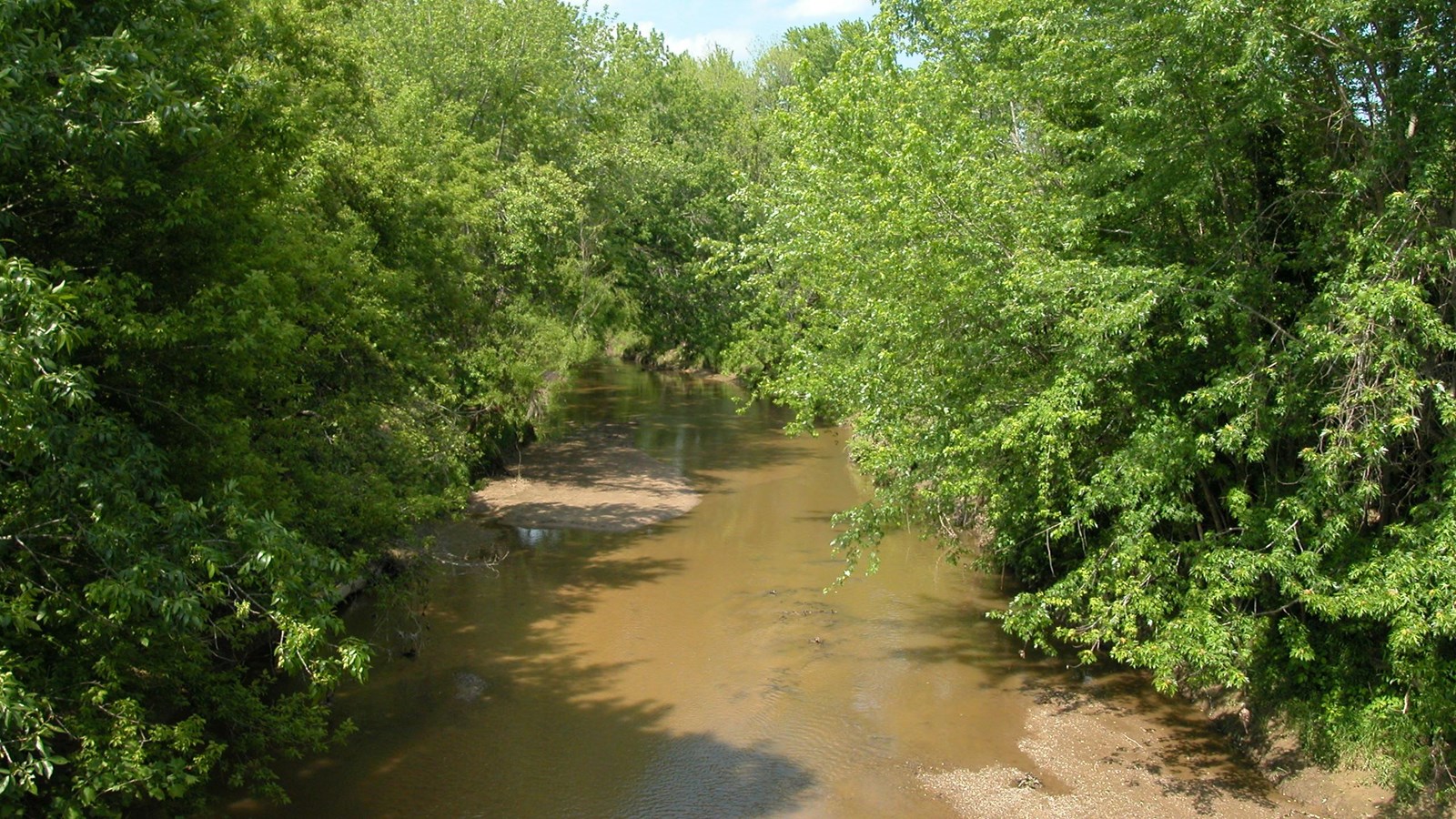Last updated: June 16, 2025
Place
Sugar Creek Camp

NPS Photo
Brigham Young intended Sugar Creek Camp to be the staging area for a hand-picked, 1,800-member vanguard company, the “Camp of Israel,” that would start west in late winter 1846.
On Feb. 4, he sent the first wagons to organize and wait there, about 7 miles west of Nauvoo, where their activities would not raise attention and anxiety among Church members. Other companies were to follow in the spring after travel conditions improved. However, as the Camp of Israel waited for Young to complete his business in Nauvoo and start the company west, temperatures dropped and the Mississippi River froze. Hundreds of Latter-day Saint families who feared being left behind crossed the ice to join the encampment at Sugar Creek. Many others crossed by boat or ferry as chunks of river ice threatened to capsize them into the river’s frigid waters.
The Sugar Creek area offered plenty of wood and water, but the February weather was unusually harsh, with temperatures often dipping below zero. Few of the unexpected arrivals had carried adequate food, blankets, tents, or warm clothing for outdoor living in these conditions. People fell ill and suffered from exposure, and nine women reportedly gave birth on one particular night in that camp of suffering.
Despite these hardships, faithful Latter-day Saints continued to drift into camp. By the time Brigham Young was able join them at the end of February, the company had grown to between 2,500 and 3,000 members. On March 1, 1846, some 500 vanguard wagons, inadequately supplied for the company’s numbers, rolled out of Sugar Creek on their way across Iowa. Today, the vicinity of the encampment, the first major stop on the Mormon Pioneer Trail, can be observed along both sides of 300th Street around the Sugar Creek bridge. Most camped on the east side of Sugar Creek, although the area west of the stream was used briefly before departure.
The land is privately owned farmland, not open to visitors, but vehicles can pull over along the shoulder of the road to view the site. The bridge over Sugar Creek is believed to be at or near the original wagon crossing. The creek banks are heavily wooded, and no evidence of wagon passage is readily visible. The area was probably more heavily wooded in the 1840s, but the views convey what the place was like for those who waited there in late winter 1846. No road signs or parking are provided
Site Information
Location (300th St west of Montrose, IA, east of junction with 205th Ave., at 300th St. crossing of Sugar Creek.)
The land is privately owned, and much of it is under cultivation. However, the area of the encampment can be viewed from 300th St. along both sides of the road.
Amenities
None. There is no signage and no turnout. Visitors must pull onto the road shoulder.
